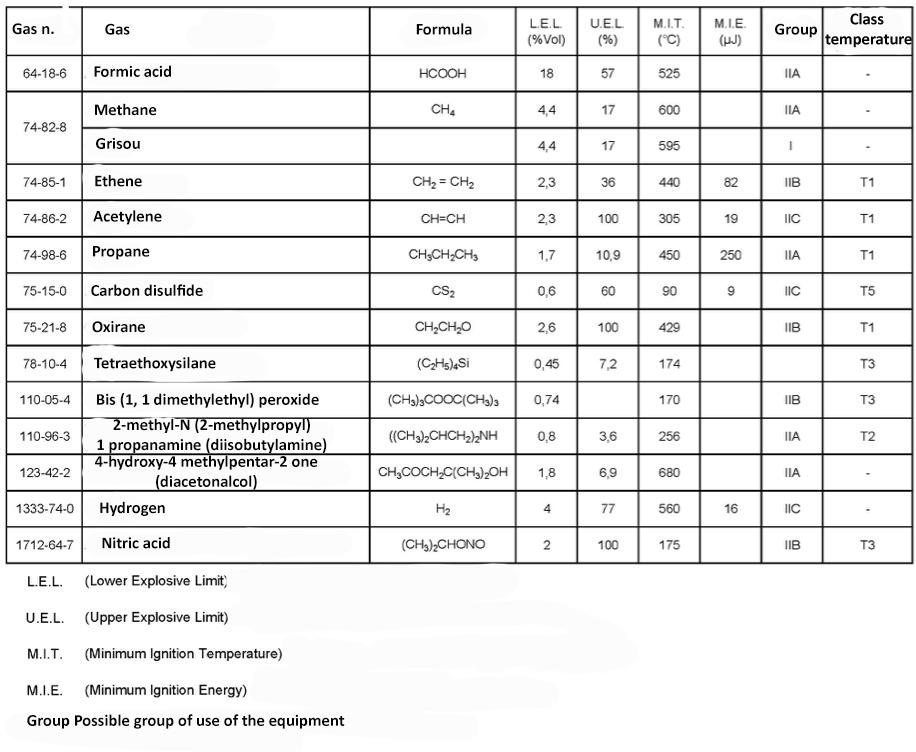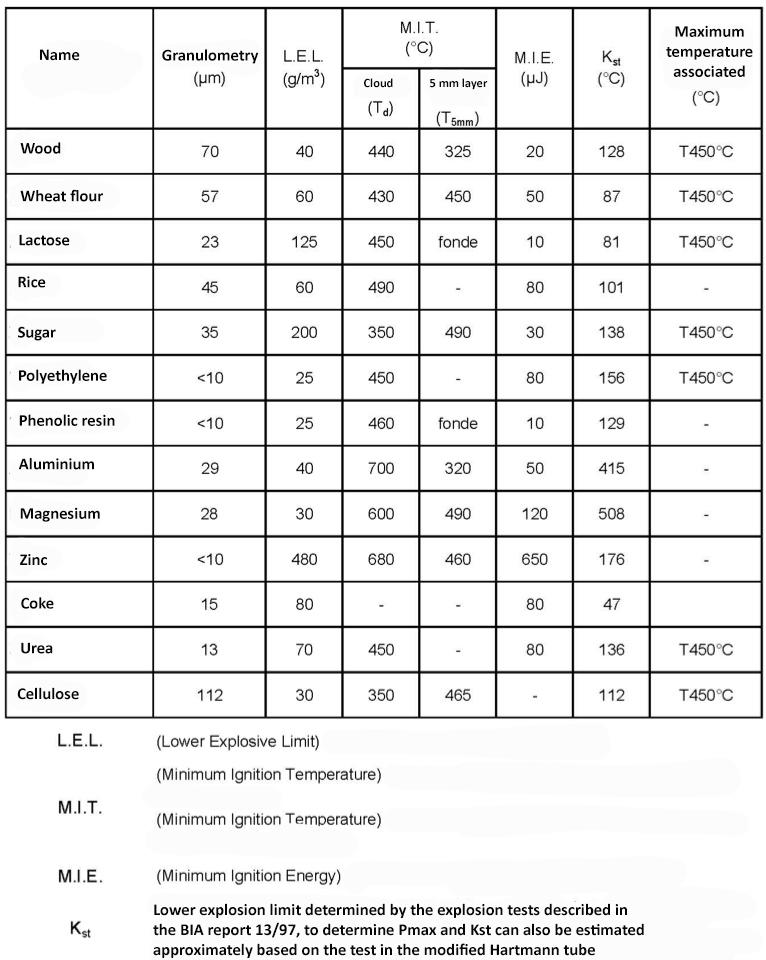Questions and answers
What are the types of gas or dust that influence the construction of electrical equipment for environments with danger of explosion? There...
What are the types of gas or dust that influence the construction of electrical equipment for environments with danger of explosion?
There are many gaseous or powdery substances that influence the construction of the equipment.
The standards 60079-10-1 for gases and 60079-10-2 for powders treat them in a complete and exhaustive way but, for the purposes of a brief example, let’s see some examples of gases and powders and their characteristics.
We can see that, depending on the type of gas, there is a minimum specific ignition temperature, which can or cannot be associated with a marking and a temperature class.
Table 1 Gas


Unlike gases, dusts present the problem of stratified storage (Table 2 Dusts) also which, of course, leads to an increase in the lower temperature dissipation capacity and, therefore, a greater possibility of ignition, to which may or may not associate a marking and a maximum temperature applicable.
Table 2 Dusts

For more information on the risks of combustible dust, read also From food to textile industry: the often disguised explosiveness of dusts